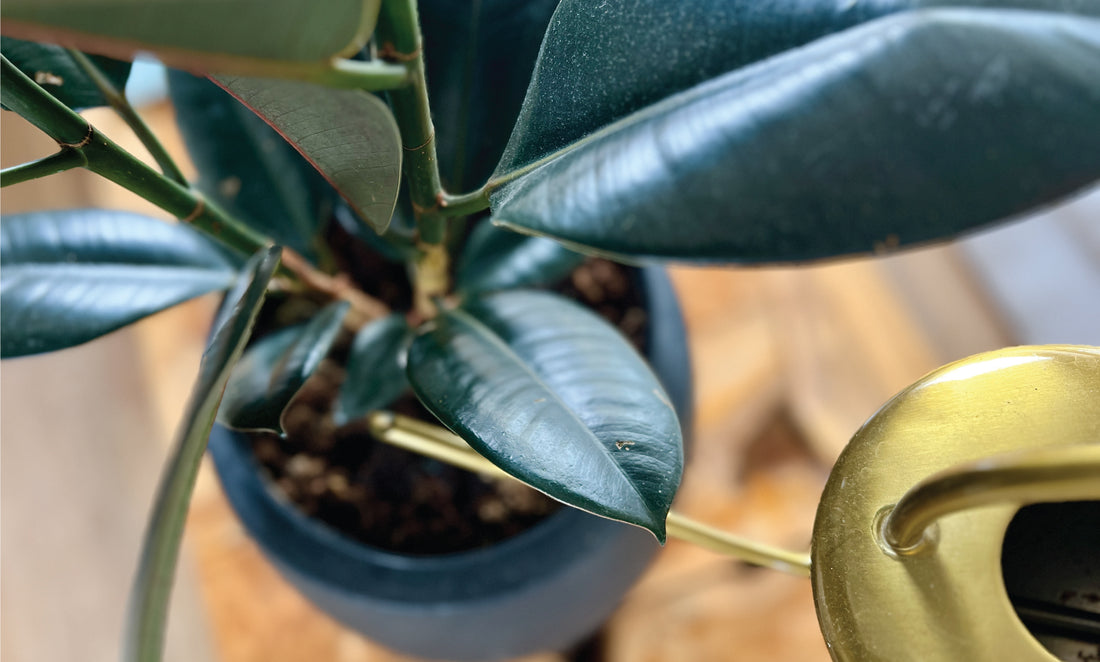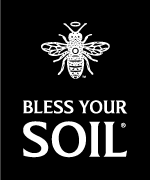
We all cherish our green friends and understand that watering plants is crucial for their growth and survival. However, many of us struggle with knowing how to do this correctly. The most common questions revolve around how much water to use and when, but it's also important to consider where to water. For instance, some advocate for bottom watering plants, while others prefer to drench their plants in the shower or bathtub. Should we flood the soil or simply moisten it? What type of water is best, tap or distilled? Our goal is to demystify the best, most efficient, and effective methods to satisfy our plants' thirst. Rest assured, for our indoor plants, there exists a correct method of watering that will maintain them in their happy, hydrated place.
Let's break it down!

How to Water Indoor Plants: A Complete Guide
When Should I Water My Houseplants?
Watering your houseplants should not follow a strict schedule; rather, it should be based on the specific needs of each plant. Understanding the moisture level of the soil is key to determining the right time to water.
Tropical houseplants, such as Ficus, Monstera, and Pothos, thrive best when the soil is allowed to dry out slightly between waterings, when 60-80% of the soil has dried. This mimics their natural environment, preventing root rot while ensuring they receive deep hydration. Tap water is typically adequate for these plants.
Calathea plants are known for their preference for more consistent moisture. Water these when the top 20% of the soil is dry. Using distilled water can prevent the leaf tips from browning, a common issue due to tap water impurities.

Succulents and string plants should be watered only when the soil is completely dry. Their water storage capabilities allow them to thrive in dry conditions, making overwatering one of the quickest ways to harm them (using a well draining soil that retains little mixture is also key).
Hoyas and Peperomia, much like succulents, prefer their soil to be completely dry before watering. This practice helps mimic their native tropical environment where they experience periods of heavy rain followed by dryness.
Other plants, such as Snake Plants and ZZ Plants, also prefer drier soil and can be watered less frequently, typically when the soil is nearly 100% dry. These plants are known to go 3 to 4 weeks without water, depending on the type of soil.
Orchids require a thorough drying out between waterings. They benefit from being watered deeply with room temperature distilled water. Some people get good results by setting ice cubes at the top of the roots weekly (this allows water to slowly drip down). Additionally, a light misting throughout the week can maintain the humidity they love without over-saturating the soil and also helps flowering buds to grow.

How Do I Know When the Soil is Dry?
Determining the right time to water your plants hinges on knowing when the soil has dried to the appropriate level for each plant's needs. There are a couple of simple methods you can use to assess soil moisture accurately.
If you prefer a more high-tech approach, a moisture meter is an excellent tool for gardeners. This device is inserted into the soil and gives a reading indicating how moist the soil is. It's a straightforward way to ensure you're watering your plants based on their actual needs rather than guessing. Moisture meters are particularly useful for larger pots where checking the soil moisture at the bottom, where roots are most active, is more challenging.

For those who like a more hands-on method, the chopstick method is a wonderfully simple and effective technique. Simply insert a wooden chopstick or a skewer into the soil for a few minutes. When you pull it out, the state of the chopstick will give you an idea of the moisture level in the soil. If it comes out clean and dry, it's time to water. If there are soil particles clinging to it and it looks damp, then your plant still has enough moisture. This method is not only easy but also a great way to get in touch with the physical condition of your plant's soil.

Another tactile method is to simply use your finger. By inserting your finger into the soil up to the second knuckle, you can feel whether the soil is dry or moist. This method works well for small to medium-sized pots, and people who like getting dirt under their finger nails. In any case, it gives you a direct sense of the soil's moisture content, sort of.
Regardless of the method you choose, regularly checking the soil moisture is key to preventing over or under-watering. Understanding the moisture needs of each plant will help you create a watering routine that keeps your plants thriving.
How Much Water Should I Give My Plants?
The amount of water your plants need can vary greatly depending on the type of plant, the size of the plant and pot, and the environment it's in. A good practice is to start by moistening the top layer of the soil slightly. This pre-moistening is crucial, especially for very dry soil, as it helps to ensure that the water you add subsequently is absorbed evenly throughout the pot rather than running straight through to the bottom.

Water. Wait. Then water again. A 2-staged approach to watering will ensure the soil is soaked evenly.
After creating a moisture cushion, water your plant thoroughly until you see water draining from the bottom of the pot. This indicates that the soil has been saturated enough to reach the roots at the bottom, ensuring the plant receives the hydration it needs. Remember, the goal is to mimic natural rainfall, allowing water to reach deep into the soil to encourage healthy root growth.
If your plant is in a decorative pot that doesn't have drainage holes, it's vital you have it in a liner pot that you can remove prior to watering. If your plant is directly in a decorative pot, you must drill drainage holes or move it to a pot that has one.

Remove your plant from the decorative pot prior to watering to allow the water to escape the planter.
Understanding the specific needs of your plant, observing its response to watering, and adjusting accordingly are key to successful plant care. Remember, overwatering is just as harmful as under-watering, so paying attention to your plant's unique requirements will help you maintain its health and vitality.
Top watering vs Bottom Watering
There's a number of reasons why people choose to bottom water. Maybe they think it's a better way to get roots hydrated, or they're trying to control soil gnats. For whatever reason, if you're curious about how to bottom water plants, you're in the right place. While bottom watering might seem like a clever trick from the pros, it's important to understand why this method might not always be the best practice. Let's explore some of the reasons why relying solely on bottom watering could be disadvantageous for your plants.
5 Reasons to Avoid Bottom Watering
- Difficulty in Assessing Water Intake: It can be challenging to gauge how much water your plant has actually absorbed using the bottom watering method. Some soils may absorb more water than necessary, leading to overwatering issues.
- Lack of Soil Flushing: The pH level of your soil is crucial for plant health. Bottom watering, especially without occasional top watering, can lead to an accumulation of salts and minerals, altering the soil's pH. This change can cause nutrient deficiencies and affect plant growth. Regularly watering from the top helps to flush these excess salts and maintain a healthy soil pH.
- Increased Risk of Root Rot: Proper drainage is essential for preventing root rot. Plants in pots without drainage holes are particularly susceptible to this issue when bottom watered. Ensuring water can drain freely from the pot's bottom reduces the risk of creating a stagnant environment that could harm the plant's roots.
- Oxygenation of Soil: The top layers of the soil need to remain oxygenated for healthy root function. Water draining through the soil helps to introduce oxygen, vital for root respiration. Periodic soil aeration can enhance this effect, promoting healthier plant growth.
- Uneven Nutrient Distribution: Hopefully you're incorporating plant food with each watering. Top watering ensures that both water and the nutrients it carries reaches all parts of the soil and roots evenly. This is important for root sensitive plants, such as Ficus. Bottom watering may result in uneven nutrient distribution, potentially leading to deficient growth.

Watering your plant fully, until you see ample water draining out the bottom of the pot, is the proper way to water.
Conclusion
In our journey through the nuances of plant watering, we've navigated from top watering to bottom watering, uncovering the rhythms and rituals that best support our leafy companions. This exploration isn't just about hydration; it's a deeper dialogue with nature, a commitment to understanding the silent language of our green friends.
Embracing this dialogue, Bless Your Soil® stands as a partner in your indoor garden story, offering tools and insights that subtly enhance the life force within each pot and plot. It's about crafting a relationship with your plants that’s as nourishing for them as it is for your soul.
As we close this chapter, let's remember the simple yet profound act of allowing water to find its way through soil, roots, and beyond. It's a practice that mirrors the flow of life itself—natural, essential, and beautifully complex — getting that nourishing plant food to every tip of every root.


